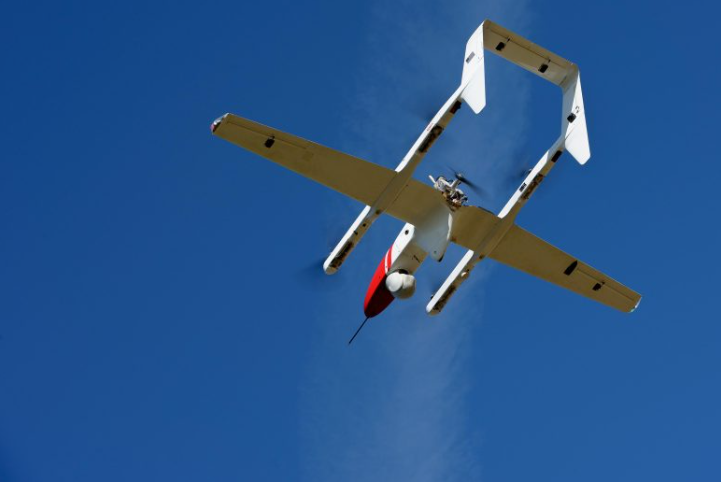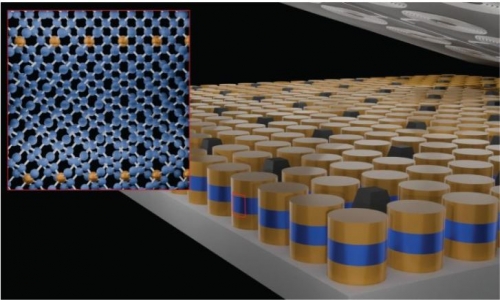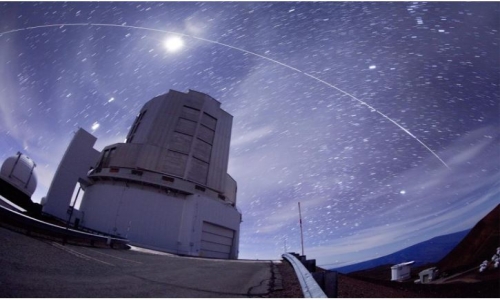


 11:41:19
11:41:19  2025-02-04
2025-02-04  830
830

By developing and testing the Portable Airspace Management System (PAMS), NASA is ensuring safer and more efficient drone operations during wildfires. These suitcase-sized units help pilots avoid collisions, share flight plans, and maintain communication without internet dependency.
NASA’s Mission to Improve Aerial Wildfire Response
NASA is working with wildfire response teams to develop advanced tools for some of the toughest firefighting challenges, especially nighttime aerial operations.
In the future, drones — both remotely piloted and fully autonomous — could play a larger role in wildfire suppression. To make this possible, NASA recently tested new technologies with teams across the country. These innovations will allow aircraft, including small drones and helicopters equipped with autonomous piloting systems, to monitor and combat wildfires 24/7, even in low-visibility conditions.
Overcoming the Limitations of Aerial Firefighting
Currently, aerial firefighting is restricted to daylight hours or clear conditions, as poor visibility increases the risk of aircraft colliding with terrain or other firefighting aircraft. NASA’s airspace management technology aims to change this by enabling drones and remotely piloted aircraft to operate safely at night, giving responders more time to contain fires from the air.
“We’re aiming to provide new tools – including airspace management technologies – for 24-hour drone operations for wildfire response,” said Min Xue, project manager of the Advanced Capabilities for Emergency Response Operations (ACERO) project within NASA’s Aeronautics Research Mission Directorate. “This testing will provide valuable data to inform how we mature this technology for eventual use in the field.”
Portable Airspace Management System (PAMS): A Game-Changer
Over the past year, ACERO researchers developed a portable airspace management system (PAMS) drone pilots can use to safely send aircraft into wildfire response operations when operating drones from remote control systems or ground control stations.
Each PAMS, roughly the size of a carry-on suitcase, is outfitted with a computer for airspace management, a radio for sharing information among PAMS units, and an Automatic Dependent Surveillance-Broadcast receiver for picking up nearby air traffic – all encased in a durable and portable container.
NASA software on the PAMS allows drone pilots to avoid airborne collisions while remotely operating aircraft by monitoring and sharing flight plans with other aircraft in the network. The system also provides basic fire location and weather information. A drone equipped with a communication device acts as an airborne communication relay for the ground-based PAMS units, enabling them to communicate with each other without relying on the internet.
Testing PAMS in Real-World Scenarios
To test the PAMS units’ ability to share and display vital information, NASA researchers placed three units in different locations outside each other’s line of sight at a hangar at NASA’s Ames Research Center in California’s Silicon Valley. Researchers stationed at each unit entered a flight plan into their system and observed that each unit successfully shared flight plans with the others through a mesh radio network.
Next, researchers worked with team members in Virginia to test an aerial communications radio relay capability.
Simulating Real Wildfire Conditions with Multiple Drones
Researchers outfitted a long-range vertical takeoff and landing aircraft with a camera, computer, a mesh radio, and an Automatic Dependent Surveillance-Broadcast receiver for air traffic information. The team flew the aircraft and two smaller drones at NASA’s Langley Research Center in Hampton, Virginia, purposely operating them outside each other’s line of sight.
The mesh radio network aboard the larger drone successfully connected with the small drones and multiple radio units on the ground.
NASA researchers then tested the PAMS units’ ability to coordinate through an aerial communications relay to simulate what it could be like in the field.
At Monterey Bay Academy Airport in Watsonville, California, engineers flew a winged drone with vertical takeoff and landing capability by Overwatch Aero, establishing a communications relay to three different PAMS units. Next, the team flew two smaller drones nearby.
Final Testing: Conflict Resolution and Weather Updates
Researchers tested the PAMS units’ ability to receive communications from the Overwatch aircraft and share information with other PAMS units. Pilots purposely submitted flight plans that would conflict with each other and intentionally flew the drones outside preapproved flight plans.
The PAMS units successfully alerted pilots to conflicting flight plans and operations outside preapproved zones. They also shared aircraft locations with each other and displayed weather updates and simulated fire location data.
The test demonstrated the potential for using PAM units in wildfire operations.
“This testing is a significant step towards improving aerial coordination during a wildfire,” Xue said. “These technologies will improve wildfire operations, reduce the impacts of large wildfires, and save more lives,” Xue said.
The Future of NASA’s Wildfire Technologies
This year, the team will perform a flight evaluation to further mature these wildfire technologies. Ultimately, the project aims to transfer this technology to the firefighting community.
Reality Of Islam |
|

Cameras hav

For years,

New scienti

This is the
 9:3:43
9:3:43
 2018-11-05
2018-11-05
10 benefits of Marriage in Islam
 7:5:22
7:5:22
 2019-04-08
2019-04-08
benefits of reciting surat yunus, hud &
 9:45:7
9:45:7
 2018-12-24
2018-12-24
advantages & disadvantages of divorce
 11:35:12
11:35:12
 2018-06-10
2018-06-10
 6:0:51
6:0:51
 2018-10-16
2018-10-16
 11:11:59
11:11:59
 2023-02-01
2023-02-01
 1:34:8
1:34:8
 2022-02-01
2022-02-01
 8:15:37
8:15:37
 2023-02-16
2023-02-16
 8:30:23
8:30:23
 2022-03-03
2022-03-03
 12:47:1
12:47:1
 2022-12-20
2022-12-20
 2:42:26
2:42:26
 2023-02-02
2023-02-02
 7:6:7
7:6:7
 2022-03-21
2022-03-21
 5:41:46
5:41:46
 2023-03-18
2023-03-18
| LATEST |